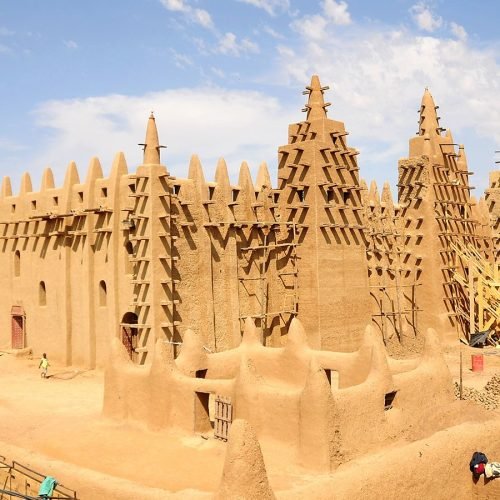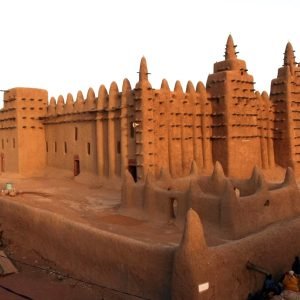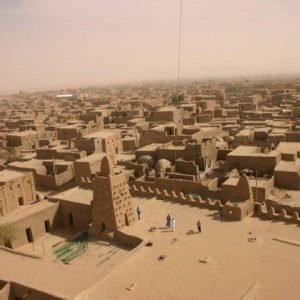Timbuktu, also known as Tombouctou, is a city in northern Mali, West Africa. It is famous for its rich history and its position as a cultural and commercial crossroads.
Timbuktu has been an important intellectual and commercial center for centuries. In the Middle Ages, the city was an important center of learning and dissemination of knowledge, attracting scholars from different parts of the world. It was also a departure point for trade caravans crossing the Sahara.
The city is renowned for its ancient libraries and manuscripts, containing precious texts on subjects such as religion, science, philosophy and history. These manuscripts bear witness to the rich intellectual history and flourishing culture that flourished in Timbuktu.
Timbuktu was designated a UNESCO World Heritage Site in 1988, in recognition of its historical and cultural importance. As a tourist destination, the city attracts travellers keen to learn more about the region's history, architecture and traditional crafts.
The Great Mosque of Timbuktu is one of the city's main sites of interest. Built of banco, it is considered a masterpiece of Sahelian architecture. It is adorned with carved wood and intricate geometric motifs, testifying to traditional craftsmanship.
Unfortunately, in recent years Timbuktu has been affected by conflict and political instability, resulting in damage and loss of some of its cultural treasures. However, preservation and reconstruction efforts are underway to protect and restore the city's heritage.
In conclusion, Timbuktu is a city steeped in history and culture, once an important intellectual and commercial center. Its ancient libraries, precious manuscripts and Grand Mosque are major attractions for visitors interested in the history and culture of West Africa.





